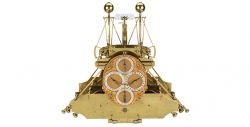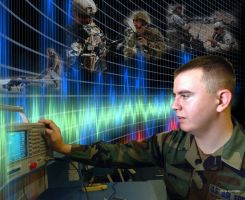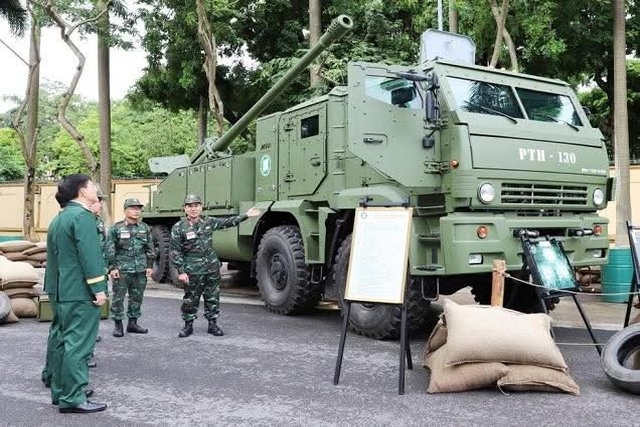DARPA Plans GPS Replacement With Atomic Clocks For Military Applications

The US Defense Advanced Research Projects Agency (DARPA) plans to replace Global Positions Systems with Atomic Clocks with Enhanced Stability (ACES).
“All of our modern communications, navigation and electronic warfare systems, as well as our intelligence, surveillance and reconnaissance systems, depend on accurate time-keeping,” said Lutwak, who will oversee the new program, called Atomic Clocks with Enhanced Stability (ACES) Wednesday in an official press release. “If ACES is successful, virtually every Defense Department system will benefit,” he said.
Among their myriad potential advantages, better clocks could reduce one of the more worrisome modern-day national security vulnerabilities: a deep and growing dependence on the Global Positioning System (GPS), not just within the military but among numerous civilian sectors of the economy. That’s because satellite-based atomic clocks—whose precision and accuracy reside in super-uniform, high-frequency oscillations of atomic energy states (typically those of cesium or rubidium atoms) rather than the mechanical oscillations of pendulums or the quartz crystals inside modern watches, cell phones and computers—provide the key reference signals that are pivotal to GPS.
The longer that clocks on Earth or on aircraft can maintain extreme accuracy in the absence of satellite reference signals, the lower the impact of any loss of satellite contact, whether caused by natural forces or adversarial activities.
One of the greatest episodes in the history of clock-making unfolded over three decades during the 18th century in response to a government challenge to overcome a daunting and often deadly problem: Find a way to reliably determine a ship’s east-west position, or longitude, on the high seas. British clockmaker John Harrison won the prize, equivalent to millions of today’s dollars, for his invention of a chronometer that remained stable enough for navigators to make accurate longitude calculations even during long-distance sea voyages.
Until Harrison’s advance, the inaccuracies of clocks at sea meant that ships, crews and cargoes routinely ended up far from their intended destinations, or worse, lost at sea. Now, with an ambitious new DARPA effort, program manager Robert Lutwak is seeking a modern-day breakthrough in atomic clocks analogous to Harrison’s centuries-old achievement in mechanical clocks—one that will give warfighters and others enormous advantages related to position, navigation and timing for extended periods after they last synchronized with a reference clock.
DARPA will convene a Proposers Day on February 1, 2016, to provide information and promote additional discussion on the ACES program, address questions from potential proposers, and provide an opportunity for potential proposers to share their capabilities and ideas for teaming arrangements.
How critical is constant contact today? Within 30 seconds of a GPS shut-down, a GPS receiver would only be able to specify that it was somewhere within an area the size of Washington, DC. An hour of GPS shutdown would expand the area of uncertainty to more than the size of Montana. It would not take long for warfighters in deserts and sailors at sea to lose their bearings; for the critical synchrony in radiofrequency, electronic and photonic signaling to disappear; and for high-precision munitions to be stripped of the astounding navigational control that has changed the character of modern warfare.
This is where ACES comes in. The technology challenge specified in the three-phase program, budgeted for up to $50 million, is to design and build a new generation of palm-sized, battery-powered atomic clocks that perform up to 1,000 times better than the current generation—which itself is the outcome of previous DARPA efforts, including the Chip-Scale Atomic Clock (CSAC) program.
The ACES program also specifies that the new clocks must fit into a package about the size of a billfold and run on a mere quarter-watt of power. Success will require record-breaking advances that counter accuracy-eroding processes in current atomic clocks, among them variations in atomic frequencies that result from temperature fluctuations and subtle frequency differences that can occur if the power shuts down and then starts up again.
“It will take a collaboration of teams with skillsets from diverse fields, including atomic physics, optics, photonics, micro-fabrication and vacuum technology to achieve the unprecedented clock stability that we seek,” Lutwak said.
In ACES’ first phase, performers will be allowed to build their components in a roomy laboratory, but must show that the parts operate together as an atomic clock with improved stability compared to existing ones. In the second phase, those who continue in the program will be called to integrate and pack the clock components of the system—including miniaturized lasers, thermal controllers, shutters, modulators and other optical elements, along with a tiny vessel of oscillating atoms—into a package no larger than 30 cm3 (two cubic inches).
In the final phase, performers will need to also incorporate the associated electronics into a package with a volume no more than 50 cm3, slight enough to hold in a clasped hand and to fly in small unmanned aerial vehicles.











